By David Gill
American photographer Charles W. Cushman, traveled t he world for more than 30 years and always had a camera by his side. Charles Weever Cushman was a member of the Indiana University Alumnus, and upon his death he bequeathed over 14,500 Kodachrome colour slides to his alma mater at the Indiana State University.
he world for more than 30 years and always had a camera by his side. Charles Weever Cushman was a member of the Indiana University Alumnus, and upon his death he bequeathed over 14,500 Kodachrome colour slides to his alma mater at the Indiana State University.
It’s from this collection that we learn of a visit to Ireland in June 1961 where he is known to have visited Dublin, Wicklow, Drogheda and then the North. It was on a Sunny Wednesday, June 7th when he arrived from London to Dublin taking photos around Dame Street, O’Connell Street, College Green & Dawson Street. The following day he headed south after an early morning walk in Dublin, and he visited Dalkey and Killiney Hill before heading even further south to Arklow and the Vale of Avoca.
He spent the night of the 8th in Wicklow and the next day continued his tour visiting the Vale of Clara and Glendalough where he finished the visit with a tour of the Upper lake. June 9th saw him heading north where he visited Drogheda and continued on towards Antrim where he caught his first sight of the hills above Belfast and spent two days visiting places including Glenarm, Larne, Parkmore and the Antrim Coast. He headed back to Dublin on June the 13th where he spent one final day before flying on to Edinburgh.
On route he documented what he saw through notes and photos but it is his photos of Dublin City that really stand out from the rest, showing a city that hadn’t been devoured by the automobile and a time when bikes mixed happily with cars. Three images stood out for us and we thought we would do a then and no comparison to see how the city has changed both architecturally and also from a transport point of view.
Location 1 – Corner of South Great Georges Street looking east along Dame Street
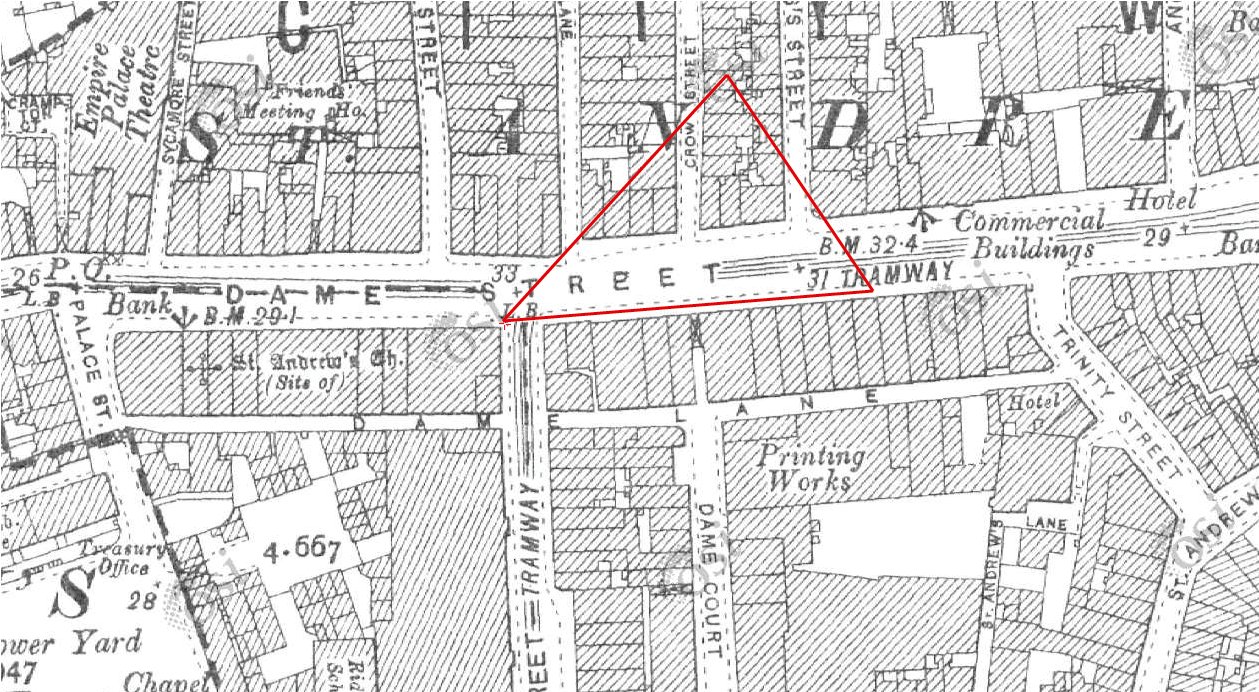

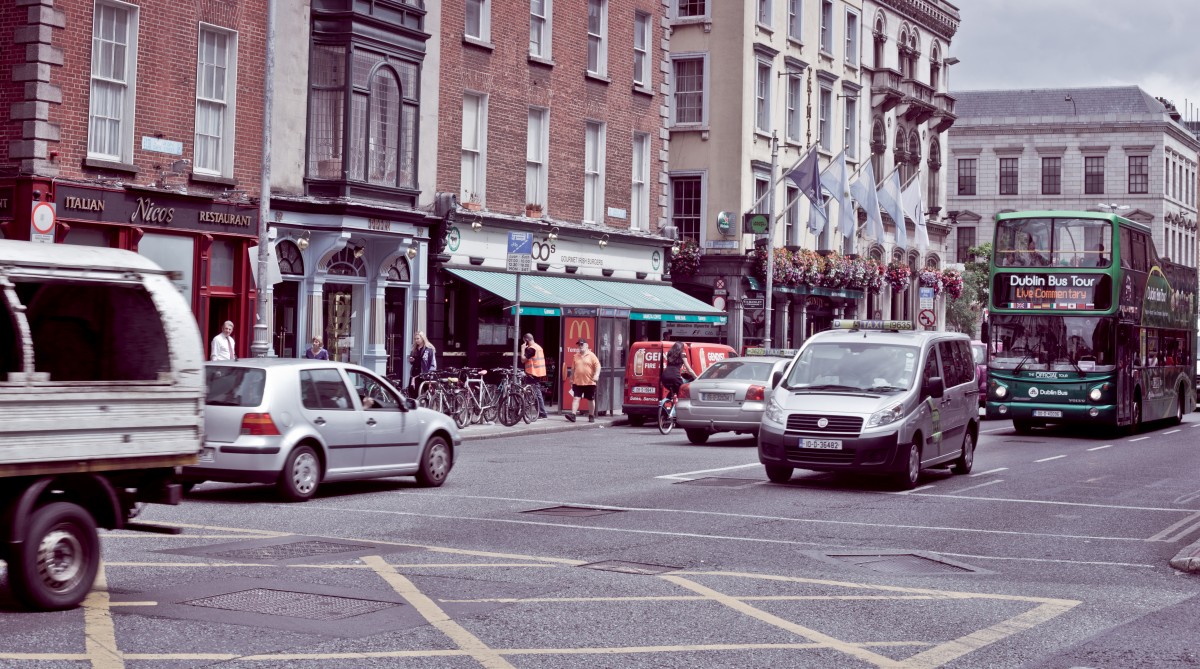

From an architectural point of view the main thing missing is the commercial building which once stood where the Central Bank now stands. Remarkably shopfronts and features haven’t changed much along this stretch other than colours and the addition of awnings and hanging baskets. The exception is the vacant building on the corner which in the archive photo had just been sold. In the current image you can see Nico’s Italian restaurant (worth a visit if you’ve never been) which has been there since the 1960’s so quite possibly just missed out on being in the original photo. Despite the number of people with mobile phones now it is interesting that 54 years apart there is still a public phone box in the same spot.
The amount of cyclists in the photo is the astounding thing. In a time when Irish people didn’t have a lot of money and cars were expensive the bicycle was one of the main modes of transport in and around the city. Also worth noting is all the cyclists are stopped at the junction and have the primary position on the road. One of the reasons for this was because back then cyclists just didn’t break lights due to the fact there were lots of Gardai on the beat and they took it very seriously if you did break a light.
(we’ll pop back soon and take a photo of evening rush hour for comparison)
Location 2 – Corner of Parliament Street looking East down Dame Street
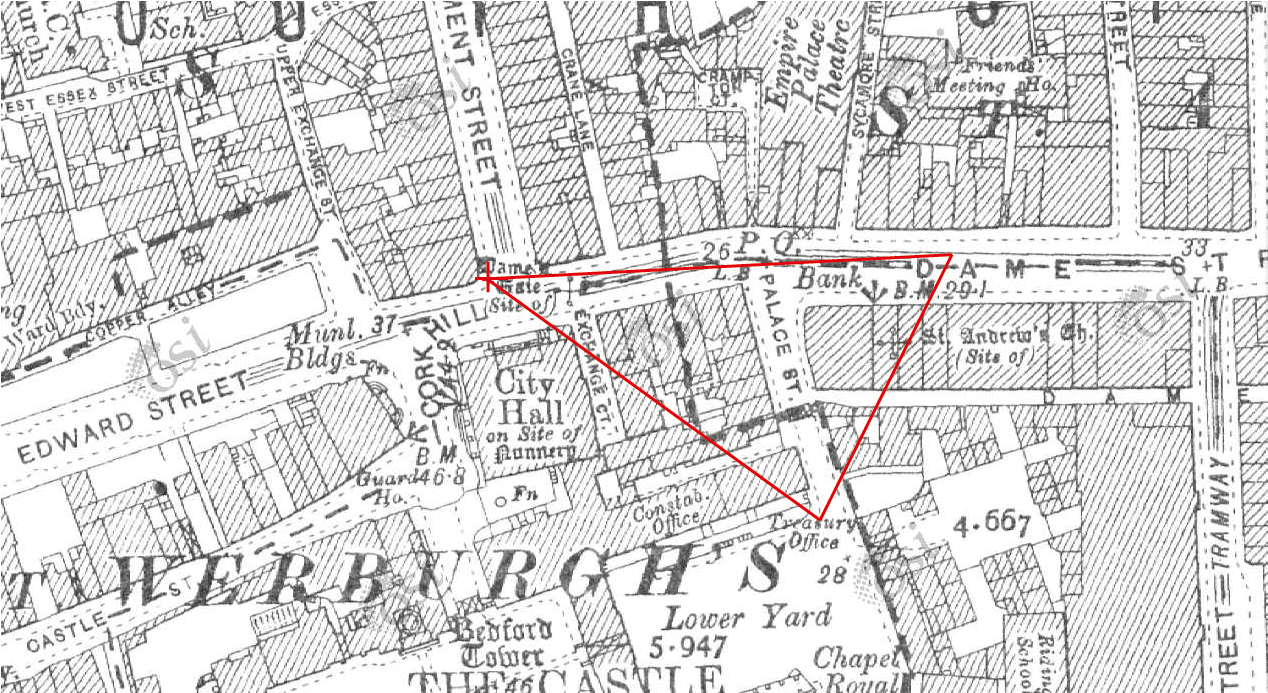
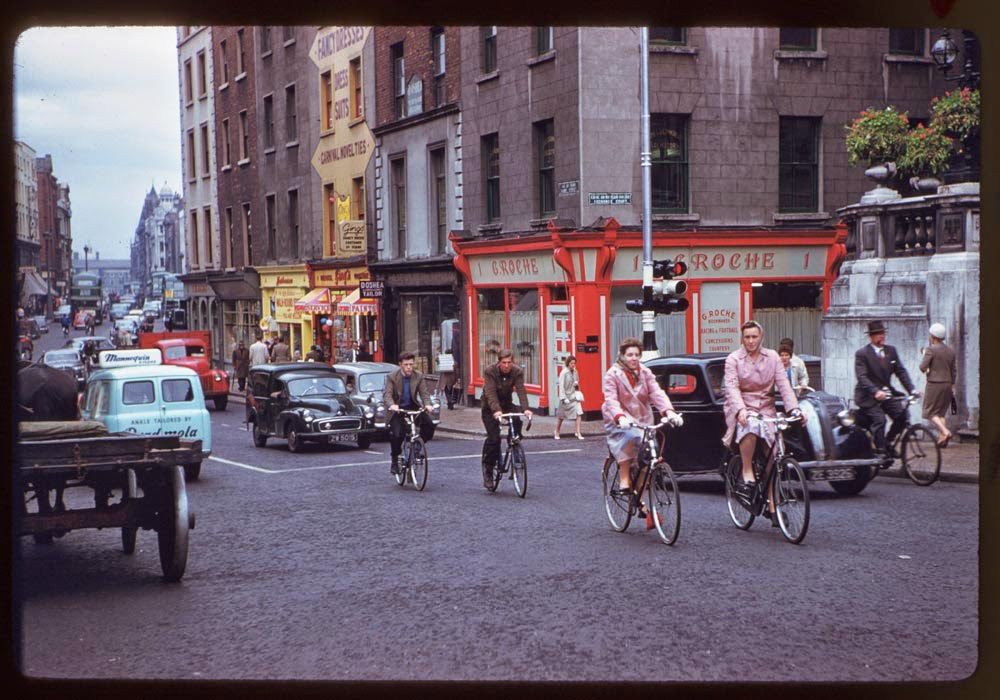
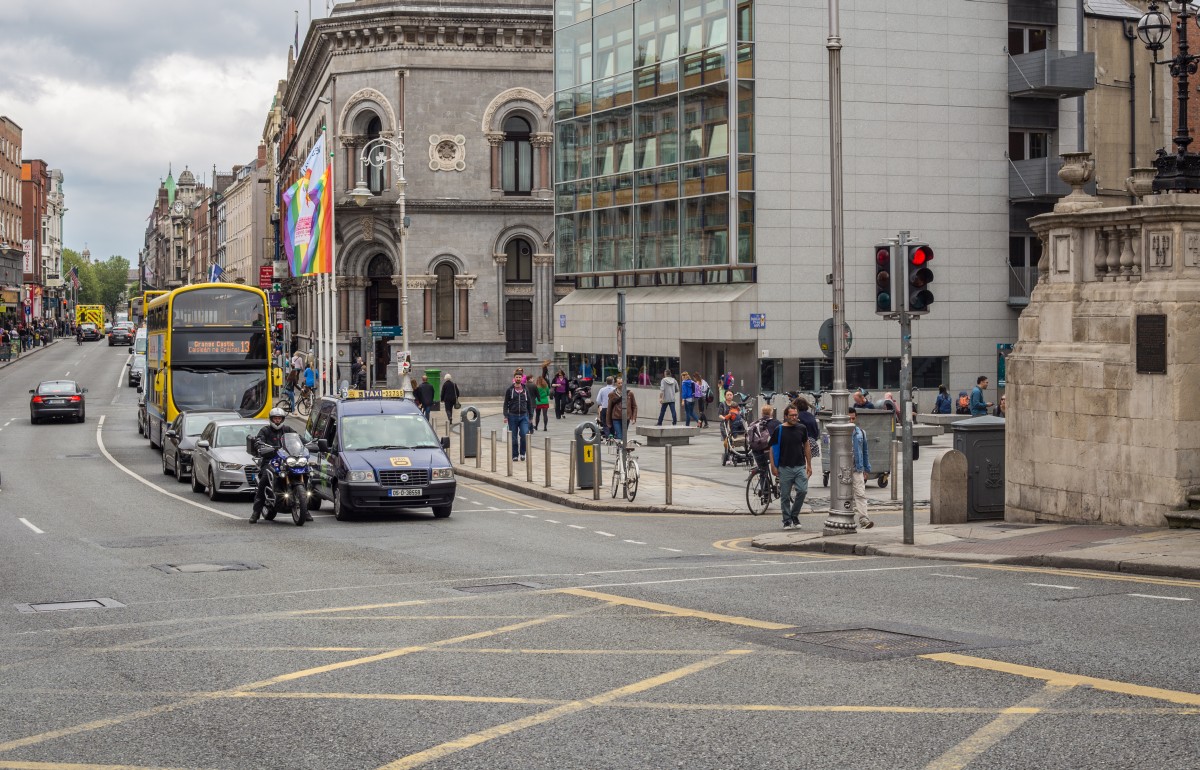
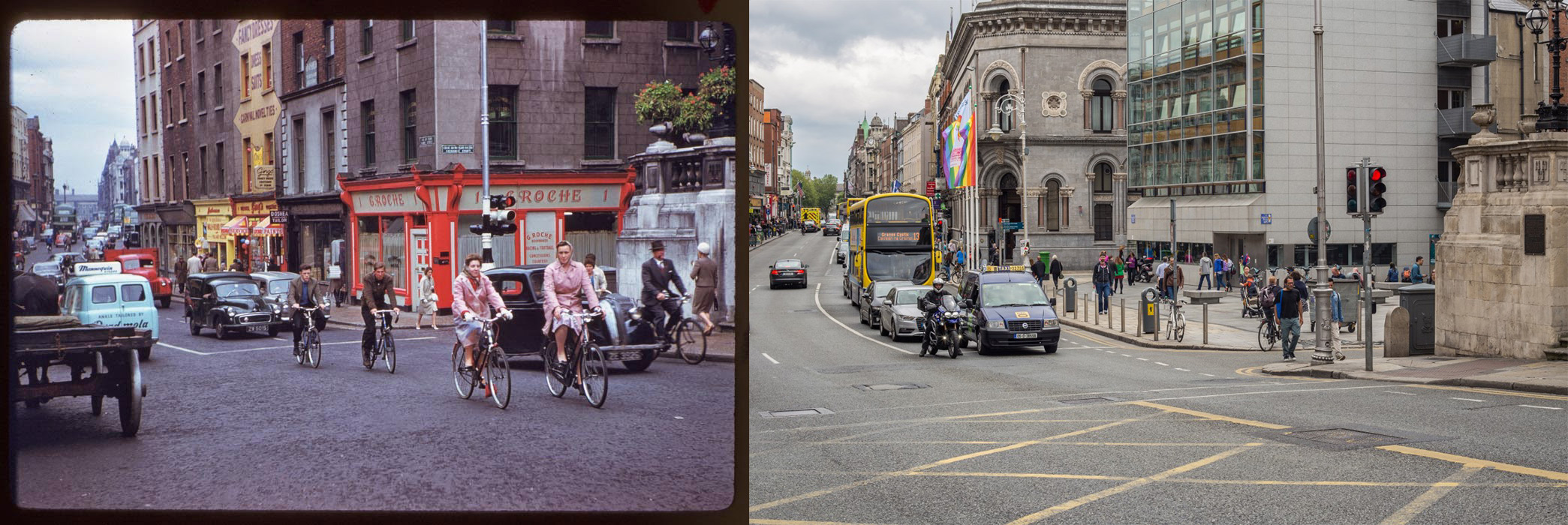
The archive shot shows the corner of City Hall and the block between Exchange Street and Palace Street which is now gone and has been replaced with a public space called Bernardo Square. Interestingly the square is home to a Dublin Bikes station and some public seating. It’s clear from this image that cycling wasn’t just something done by people with less money. Notice the well dressed gentleman just beside city hall (which had a budget for flowers in 1961 but not today it would see).
Location 3 – Corner of Werburgh Street and Castle Street looking towards Christ Church Place
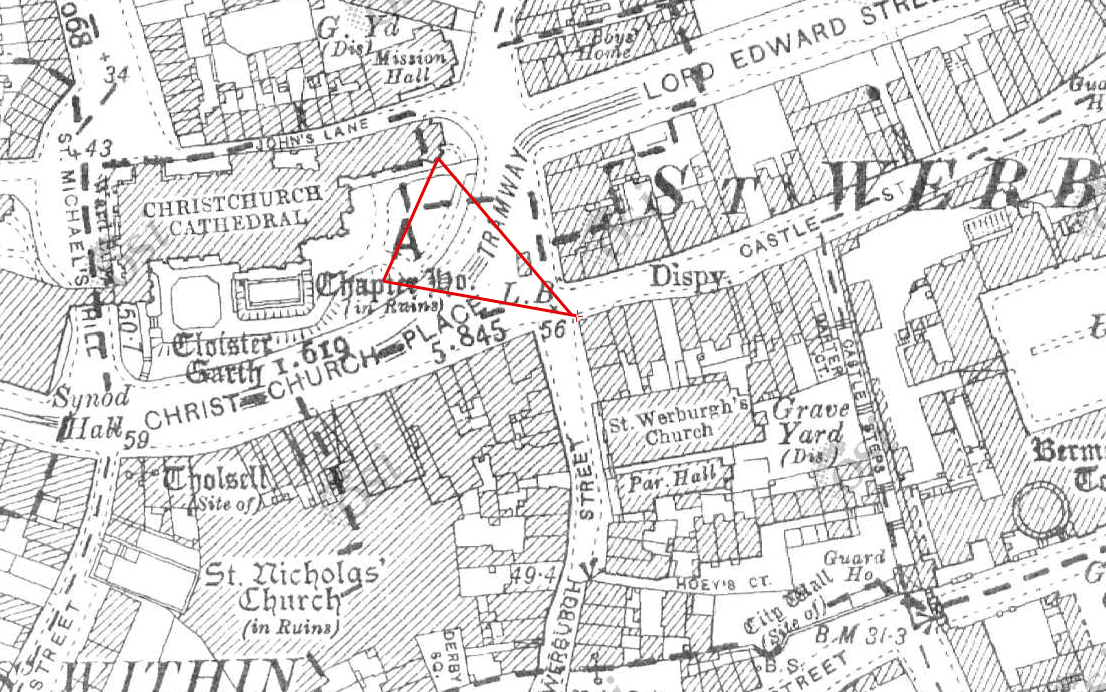
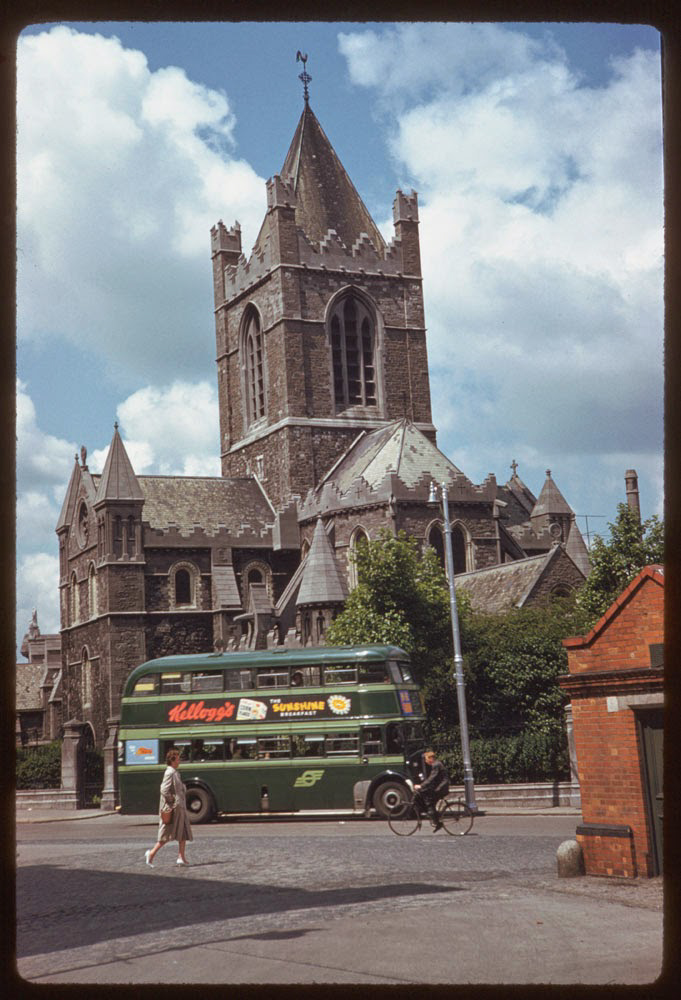
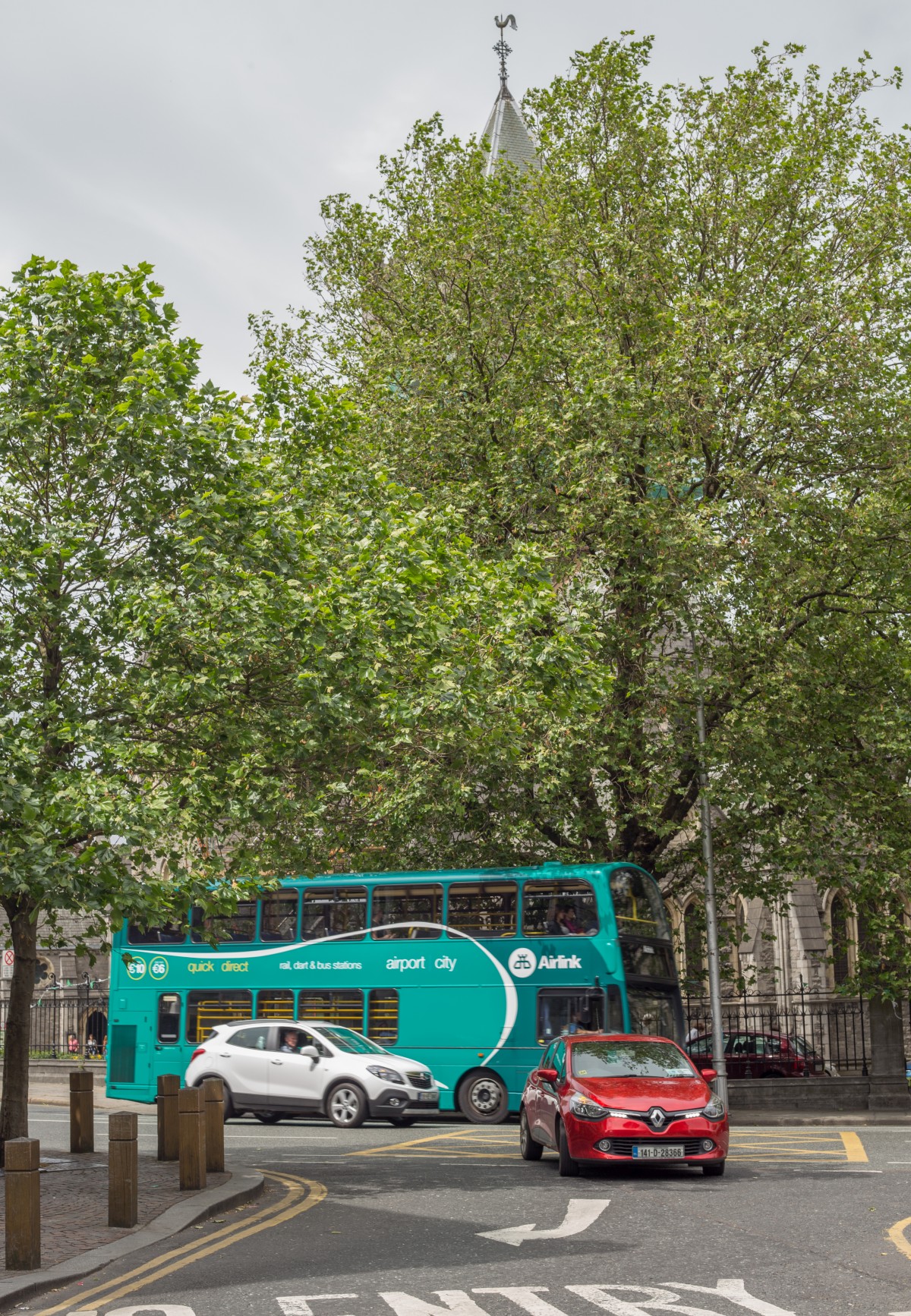
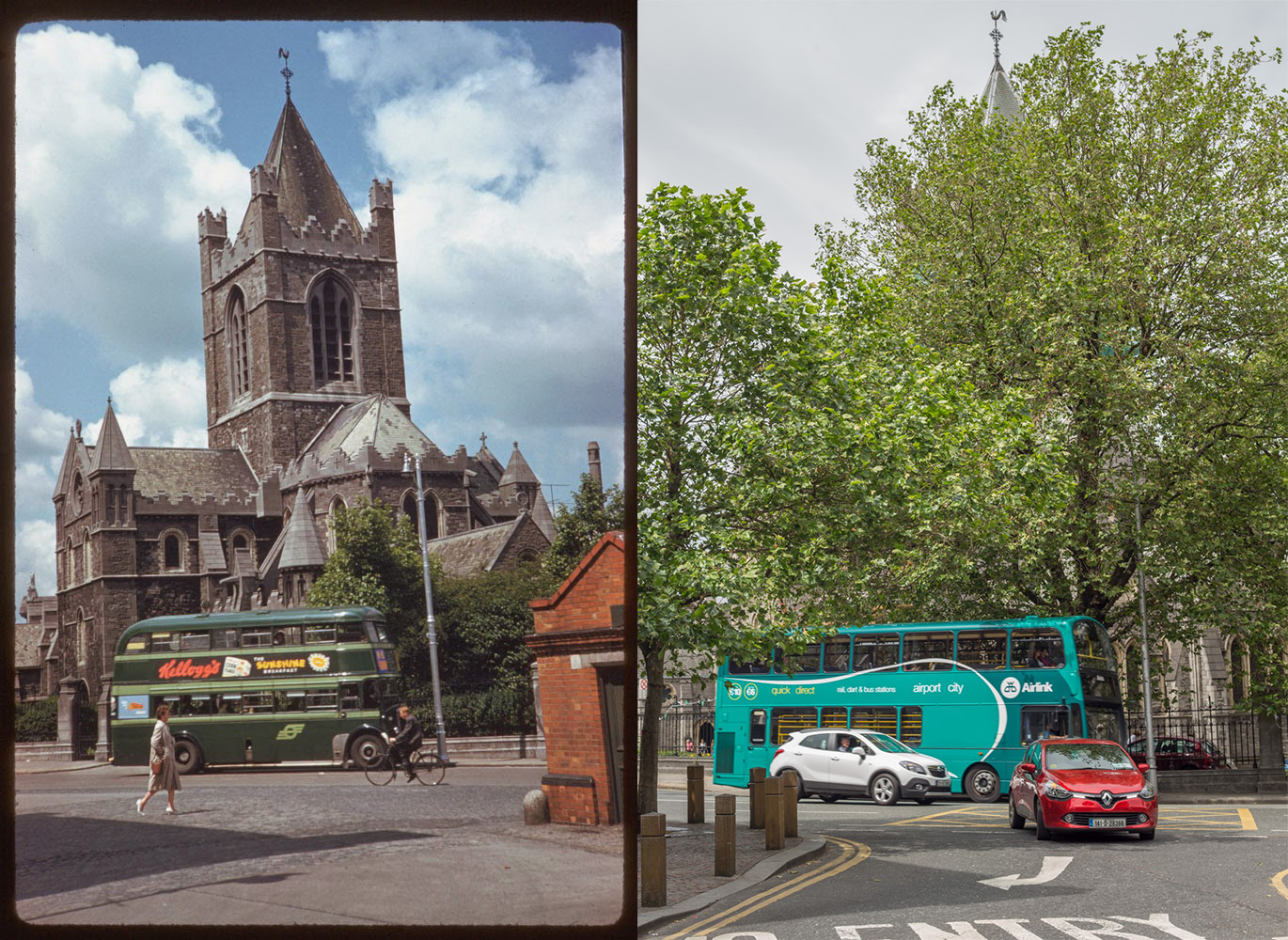
Not a huge amount has changed in this shot other than mother nature obscuring the view of Christchurch Cathedral with some mighty trees. The red brick building on the right is now gone. This was probably part of the tram network as it visible on the 1900’s 25″ ordanancy survey maps. Traffic calming is visible in the current image with an extended curb and some bollards. There were only a handful of cyclists using this route when we were there.
Conclusion
From the up to date photos you can see there are definitely less people using bikes at lunch time in the city. It is unknown what time the archive photos were taken but considering both were taken in June and looking at the shadows it is quite possible the archive photos were taken in and around the same time.
Dublin has certainly seen an increase in bike use at peak times during the morning and evening commute. Latest figures show that the number of people commuting by bike is now more than 10,000 and makes up 5.4pc of all trips.
With plans to create more pedestrianised areas in central Dublin and plans to create cycle routes on the quays this can only be good news to encourage people who wouldn’t currently consider cycling in the city during the day to hop on a bike. Mixing with buses and cars on Dublin’s narrow streets can be very daunting but with well designed spaces cyclists can feel safe. It’s worth noting that in 1961 cars were slower, had worse brakes and there were less of them. Buses were shorter and harder to steer and as such moved slower through our streets. The population of Dublin has almost doubled since then. With narrow streets full to capacity creating free flowing safe cycle routes is a must for the future of the bike in the city.
all archive photos are property of Indiana State University


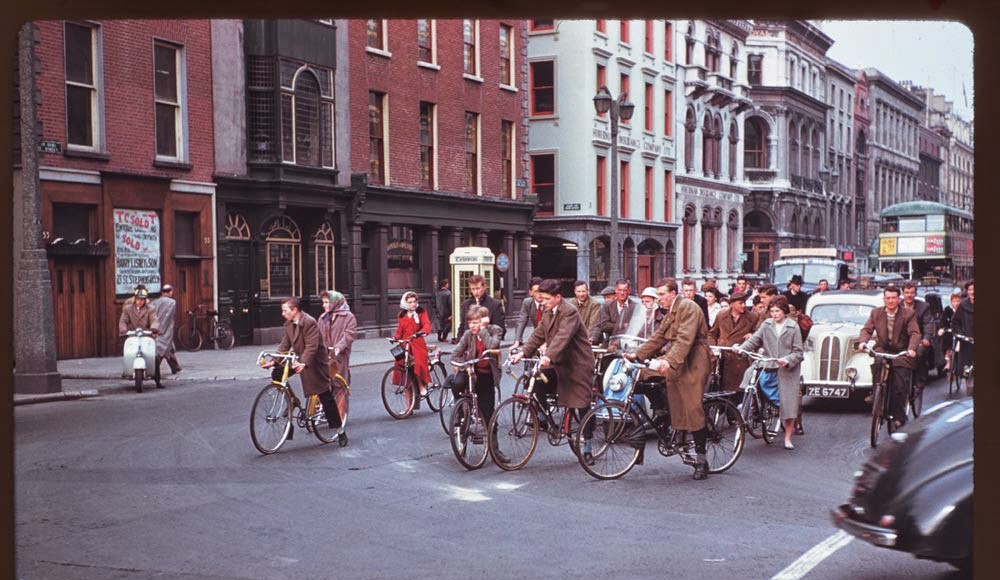


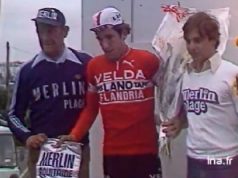

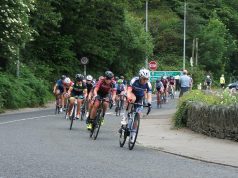
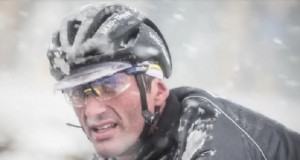
[…] published a article last week comparing photos of Dublin in 1961 to photos taken last week. Well here is a great video which actually goes through the junctions we featured and might explain […]